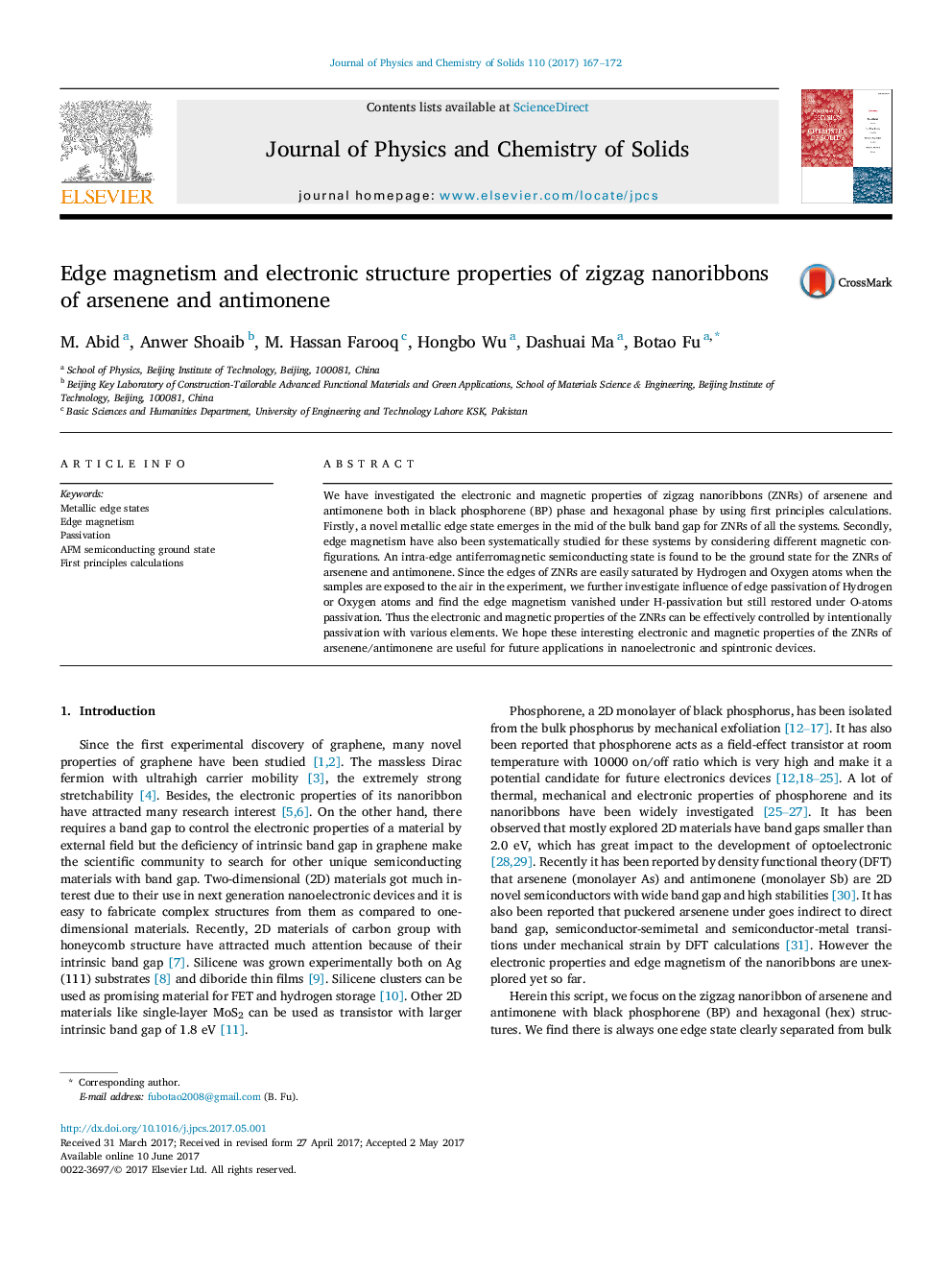| کد مقاله | کد نشریه | سال انتشار | مقاله انگلیسی | نسخه تمام متن |
|---|---|---|---|---|
| 5447218 | 1511496 | 2017 | 6 صفحه PDF | دانلود رایگان |
- Metallic edge states found for zigzag nanoribbons of arsenene and antimonene.
- Edge magnetism performed for different magnetic configurations.
- Antiferromagnetic semiconducting ground state originates.
- Edge magnetism vanished for hydrogen atom passivation and makes it insulator.
- Magnetism restored for oxygen atom passivation.
We have investigated the electronic and magnetic properties of zigzag nanoribbons (ZNRs) of arsenene and antimonene both in black phosphorene (BP) phase and hexagonal phase by using first principles calculations. Firstly, a novel metallic edge state emerges in the mid of the bulk band gap for ZNRs of all the systems. Secondly, edge magnetism have also been systematically studied for these systems by considering different magnetic configurations. An intra-edge antiferromagnetic semiconducting state is found to be the ground state for the ZNRs of arsenene and antimonene. Since the edges of ZNRs are easily saturated by Hydrogen and Oxygen atoms when the samples are exposed to the air in the experiment, we further investigate influence of edge passivation of Hydrogen or Oxygen atoms and find the edge magnetism vanished under H-passivation but still restored under O-atoms passivation. Thus the electronic and magnetic properties of the ZNRs can be effectively controlled by intentionally passivation with various elements. We hope these interesting electronic and magnetic properties of the ZNRs of arsenene/antimonene are useful for future applications in nanoelectronic and spintronic devices.
Journal: Journal of Physics and Chemistry of Solids - Volume 110, November 2017, Pages 167-172
